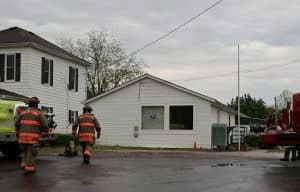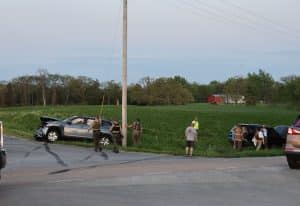Schools plan for fall return
With every region of the state currently in Phase 4 of the state’s reopening plan, one of the most pressing questions on the minds of many is how school will look in the fall.
To assist educators with planning how to safely have their students present for the first time since March 17, the Illinois State Board of Education and Illinois Department of Public Health released over 60 pages of guidelines.
The document includes detailed information like remote learning recommendations, executive order explanations and more.
It also lists five requirements all schools must follow if they plan to have students in their buildings this fall.
Those are that they require the use of personal protective equipment, including face coverings, prohibit over 50 people in one space at a given time, require social distancing whenever possible, conduct symptom screenings and temperature checks or require self-certification that people entering school buildings are symptom-free and increase schoolwide cleaning and disinfecting.
“In person instruction is strongly encouraged in Phase 4; however, it is critical to note that this does not signify a return to pre-pandemic operations,” the IDPH and ISBE wrote. “Appropriate social distancing, face coverings, enhanced sanitation measures and other accommodations will be necessary to ensure the safety of students, staff and their families.”
Other key components of the guidelines are that they could change as more research on COVID-19 is completed and the public health situation changes, they advise schools to prepare for a resurgence of the virus this fall and they recommend schools return to traditional grading policies, modifying them as necessary.
State Sen. Paul Schimpf (R-Waterloo) said these recommendations went too far, “usurp(ing) the authority of local school boards and parents to determine how to best educate students and keep them safe.”
“It is parents and local education experts, not unelected, unaccountable bureaucrats, who should be in control of our children’s education,” Schimpf said. “The governor and ISBE should have focused more on the looming legal issues associated with absenteeism and disease transmission, instead of micromanaging safety issues that are best left to local superintendents.”
Waterloo Superintendent of Schools Brian Charron expressed mixed feelings about the guidelines.
“It’s a little overwhelming coming up with everything,” Charron acknowledged. “As individuals, we’ve kind of gotten this COVID fatigue and fallen into complacency. And we’re trying to make sure that none of that carries over to once we resume the responsibility of supervising and educating children.”
Columbia Assistant Superintendent Courtney Castelli was in a similar frame of mind, though she seemed a little more positive on the guidelines.
“ISBE guidelines for in-person instruction give us some answers to questions we had prior to the lengthy document released on June 23,” she said. “In many instances, the guidance allows for district flexibility to implement. For example, six-feet social distancing is recommended, but only when possible. The implementation and feasibility of the guidance is the challenge.”
Charron said his district will follow the mandatory guidance and is also developing contact tracing protocols, though he said having so many precautions will negatively affect education.
“I think it’s going to be a significant distraction,” he said, noting he thinks those will be manageable in smaller groups like in summer school. “We’re having difficulty right now wrapping our heads around how we can incorporate state guidelines and how we can have school that resembles what we’re used to.”
Charron said one of the most challenging aspects of the guidelines is the 50-person limit, as that includes areas like gyms, cafeterias and hallways. That means even arrival and departure times cannot take place like normal.
As the pandemic has evolved, Charron noted the state has repeatedly revised guidelines after getting more feedback and data, which he hopes will happen again here to allow more normalcy.
“I don’t think it’s appropriate for the state to be suggesting we should resume in-person instruction for our students and in any way suggesting to parents through the state of Illinois that school can resume and then hand us a set of guidelines that restricts it to 50 people in a space at a time,” he explained.
Castelli said her district will also follow safety precautions mandated by the state, but agreed they present challenges with distancing requirements being the most troublesome.
“Social distancing requirements are one of the biggest obstacles due to the limitations it puts on class sizes and bus capacity,” Castelli said “PPE is in short supply and the cost associated with this material is quite substantial. Many districts are using (Coronavirus Aid, Relief and Economic Security) Act funds to assist with this financial burden, but our allocation from this grant is not enough to address both PPE and technology needs.”
The state seems to have recognized this, as it said it will provide 2.5 million cloth face masks, “allowing K-12 schools to provide a cloth face mask to all students and staff.”
Additionally, Castelli said that while Columbia handled remote learning well in the spring, something is lost with all these safety measures in place.
“Education is a highly interactive process — between students and students with teachers,” she said. “Primary grades benefit from play-based learning, and this is not possible with the current safety measures. Collaborative learning practices will be drastically reduced with social distancing. I can’t imagine a preschool or kindergarten student having their first formal school experience, one in which everyone is distant and wearing masks. This isn’t how school is supposed to be. It’s sterile.”
The Valmeyer School District said in a Facebook post that it is working on its plan for the school year, and the state’s guidelines will help determine how that works.
It is also going to survey families before releasing a “transition plan” in the next couple weeks.
“We will not be able to create a plan that will alleviate all concerns, but we hope to provide a plan that will enable us to have a safe learning environment for students and staff that meets state and CDC guidelines,” Valmeyer Superintendent Eric Frankford and Valmeyer Elementary Principal Teena Riechmann wrote in the post.
Valmeyer also said it is planning to tackle face coverings in its own way.
“We know that face coverings are a topic of concern for parents and their students,” Frankford and Riechmann wrote. “The district is in the process of purchasing face shields for all students and staff. We feel that the shields will provide greater comfort, breathability and communication over an extended period of time. However, your child may use whatever face covering they are most comfortable with wearing as long as it meets ISBE guidelines.”
In terms of taking more time to plan before announcing official plans for the fall, Valmeyer’s approach is the norm among Monroe County school districts.
A meeting with school attorneys and area superintendents was held Tuesday to facilitate that, and Charron said he will plan to meet with principals and teachers in the coming days to develop Waterloo’s plan.
Currently, he said it is likely school will start Aug. 17 – one week later than initially planned. He said the district may also utilize a “blended” approach of in-person instruction some days and remote instruction other days.
“I’m trying to balance the educational needs of our students with the burden of students not being in school could have on families,” Charron said. “We certainly want to support our parents going to work and keeping the economy from collapsing.”
Charron said he hopes to have a draft plan to present at Waterloo’s Board of Education meeting July 20.
Similarly, Castelli said Columbia is working on its plan with the intention to have it ready for its meeting July 16.
Each building in Columbia is meeting to review remote learning from last year and plan for this year, which will work with the district’s overall plan.
Summer school
While the fall will see more students in school buildings than there have been in months, some in-person education resumed in June while the region was in Phase 3.
With precautions like social distancing, face coverings and symptom checks in place, schools have resumed some activities like in-person driver’s education instruction.
In Waterloo schools, summer instruction has varied in focus depending on grade level.
High school students are focused on finishing requirements for incompletes from last school year, junior high students are focused on problem areas in reading or math and elementary students are focused mainly on reading.
Columbia, on the other hand, has postponed summer classes until the end of this month or early August so it could have fewer restrictions for in-person learning.






